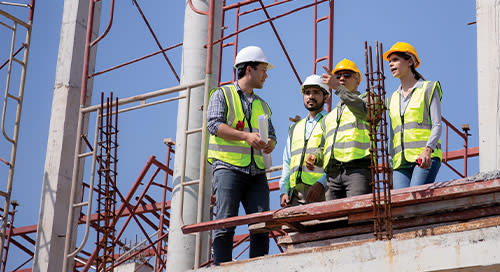Waste is commonplace in the construction sector. According to the Facilities Management Institute (FMI), poor project data and communication contributes to $280 billion of industry rework each year and general contractors routinely spend as much as 35% of their time on non-productive activities.
The good news is that advances in artificial intelligence hold the potential to improve the efficiency and effectiveness of design and construction projects. Analysis with AI tools can reveal actionable insights, automation can streamline project processes and workflows, and augmentation can enhance creativity by generating new ideas for teams.
Both Autodesk and IMAGINiT offer tools that can transform the way teams handle design- and construction-related work. Here are a few examples:
- Forma – Rapid Operational Energy Analysis. Rapid Operational Energy Analysis enables designers to see how changes to interrelated factors like a building’s geometry, window-to-wall ratio, and roof and wall construction types will impact the building’s predicted energy use.
- Dynamo – Recommended Nodes. Recommended Nodes is a new ranking method powered by machine learning which determines which nodes are shown when users trigger Node Autocomplete functionality. This allows team members to build Visual Programs more efficiently.
- Autodesk Construction Cloud -- Construction IQ. This built-in AI technology automatically analyzes data that is collected and stored in Autodesk Construction Cloud, such as issues, observations, forms, subcontractor assignments, and historical project data. Based on this information, it identifies and prioritizes the construction risks associated with project execution.
- Autodesk Build – Photo Autotags. Autodesk Build leverages artificial intelligence to automatically add tags as metadata to photos. This enables teams to rapidly organize and access images needed for tracking project progress, documenting completed work, dealing with claims and disputes, releasing payments, and improving handover.
- Autodesk Construction Cloud -- AutoSpecs. This AI-powered functionality automates submittal log creation and management. This reduces project risk, strengthens client relationships, and ensures contract compliance.
- Autodesk Takeoff – Automated Symbol Detection. This functionality leverages AI to scan project drawings and automatically detect similar symbols. This makes it easier for estimators to identify and obtain a count of specific symbols, saving time and reducing manual errors during quantity takeoff work.
- IMAGINiT Clarity. IMAGINiT Clarity helps teams access the data that resides within their Revit and AutoCAD files and use it more effectively for analysis and insight generation. With Clarity, teams can pull data out of a Revit file and insert it into a Microsoft SQL database. It then becomes possible to analyze square footage, furniture, fixtures, and equipment, project profitability, and more.
Conclusion
Whether your company wants to be an early adopter of AI technologies or take a more conservative approach, it’s important to stay abreast of how AI tools are revolutionizing how design and construction projects are run. With this knowledge, you will be prepared to brief clients, prospects, and senior leaders about what your firm is doing with AI. To learn more, listen to our webinar “Construction Innovation: Harnessing AI for Project Success” or download our companion white paper.























